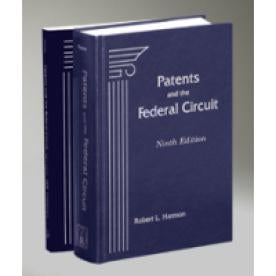Takeaway: A petition that cites to a declaration, which in turn cites to prior art references, may be considered to have improperly incorporated arguments by reference where the prior art citations and the associated analysis are not set forth in the petition.
In its Decision, the Board denied institution of an inter partes review, finding that Petitioner had not established a reasonable likelihood of prevailing with respect to any challenged claim of the ’988 patent. The ’988 patent describes “a system for remote data acquisition and centralized processing and storage of the acquired data,” and “is said to improve upon the prior art by providing an automated, reliable, secure system to process electronic and paper transactions.”
Patent Owner first argued that the Petition was time-barred under 35 U.S.C. § 315(b) because Petitioner was served with a complaint more than a year prior to the filing of the Petition. However, Patent Owner did not allege that the complaint alleged infringement of the ’988 patent, and in fact, the complaint did not. Instead, the complaint “alleged breach of contract and sought a declaratory judgment as to indemnity, warranty against infringement, and common law indemnity.” Because infringement was not alleged, the Board held that the Petition was not barred under Section 315(b).
With respect to the substantive grounds of unpatentability, the Board first noted that a petition “must contain a ‘full statement of the reasons for the relief requested.’” The Board also noted that it would not “consider information presented in a supporting declaration, but not discussed sufficiently in a petition; among other reasons, doing so would permit the use of declarations to circumvent the page limits that apply to petitions.”
The Board noted that the Petition relied upon the Declaration of Stephen Gray, which cited to a 1,003 page claim chart appended to his declaration, which in turn cited to the references themselves. In other words, “the Petition involves three levels of incorporation: (1) the Petition incorporates the Gray Declaration; (2) the Gray Declaration incorporates the claim chart; (3) the claim chart incorporates from the references themselves.” The Board then explained that, for example, the first ground alleged in the Petition spanned six pages in the Petition but expanded “to thirty-six pages of citations to references.” The other six grounds used the same approach.
The Board found Petitioner’s approach to be an incorporation by reference of arguments from the Gray Declaration into the Petition, “thereby circumventing the page limits that apply to petitions.” Thus, the Board “decline[d] to consider the information found only in the Gray Declaration.” Based on the analysis in the Petition and the specific citations to the references in the Petition, the Board found that Petitioner had not met its burden of establishing a reasonable likelihood of prevailing with respect to any challenged claim.
Fidelity National Information Services, Inc. v. DataTreasury Corp., IPR2014-00489
Paper 9: Decision Denying Institution of Inter Partes Review
Dated: August 13, 2014
Patent: 5,910,988
Before: Michael P. Tierney, William V. Saindon, and Matthew R. Clements
Written by: Clements
Related Proceedings: DataTreasury Corp. v. Fiserv, Inc., 2:13-cv-00431 (E.D. Tex.);DataTreasury Corp. v. Jack Henry & Associates, Inc. et al., 2:31-cv-00433 (E.D. Tex.); DataTreasury Corp. v. Fidelity National Information Services, Inc. et al., 2:13-cv-00432 (E.D. Tex.); CBM2014-00021; CBM2014-00057; CBM2014-00087; IPR2014-00491; CBM2014-00020; CBM2014-00056; CBM2014-00088; IPR2014-00490; and Ex Parte Reexamination Control No. 90/012,537



 i
i


